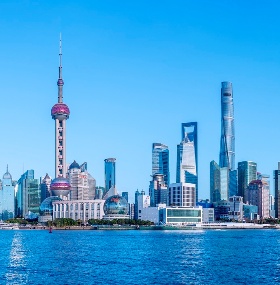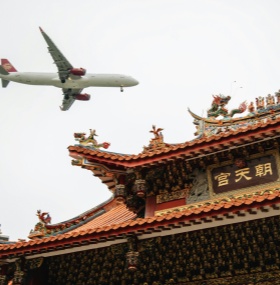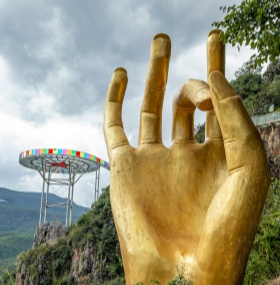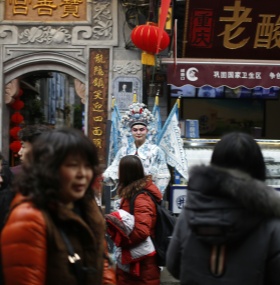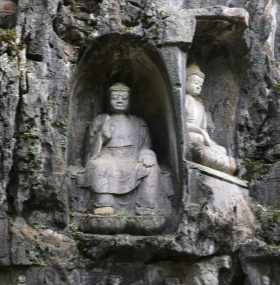China is a land of rich history, steeped in ancient traditions, architectural masterpieces, and cultural heritage. For photography enthusiasts, it offers an unparalleled opportunity to capture the essence of centuries-old monuments and historical landmarks. This photography tour takes you through some of China's most iconic ancient buildings and ruins, where history and culture come to life through the lens.
1. The Great Wall of China – Majestic and Timeless
One of the most iconic symbols of China, the Great Wall stretches across northern China, offering photographers dramatic landscapes and unique perspectives at every turn. The Wall itself, with its ancient stonework and majestic presence, provides the perfect subject for capturing both its architectural marvel and the stunning landscapes it traverses.
Photography Highlights:
Mutianyu and Badaling Sections: These popular sections offer well-preserved views, perfect for capturing the sweeping grandeur of the Wall against the mountainous backdrop.
Jinshanling and Simatai: For photographers seeking a more rugged, authentic experience, these sections provide less-crowded, more dramatic shots of the Wall in its wild state.
The Wall at Sunrise or Sunset: The changing light creates perfect opportunities for capturing the Wall’s form and texture, with long shadows and golden hues.
Photography Tip: Use wide-angle lenses to capture sweeping vistas, and a zoom lens to isolate interesting details like watchtowers, winding paths, and stonework.
2. The Forbidden City – Imperial Majesty
The Forbidden City, once the imperial palace of the Ming and Qing dynasties, is a treasure trove of ancient Chinese architecture. With its grand halls, intricate carvings, golden roofs, and ceremonial gates, the Forbidden City presents an unmatched opportunity to capture both the scale and the delicate beauty of traditional Chinese palatial design.
Photography Highlights:
Hall of Supreme Harmony: The largest and most important building, perfect for wide shots showing its majestic architecture.
Imperial Gardens: The peaceful gardens within the Forbidden City offer beautiful framed shots with traditional pavilions and manicured landscapes.
Golden Roofs and Red Walls: The iconic red and yellow color scheme that characterizes the Forbidden City is a striking subject, especially when lit by the warm afternoon sun.
Photography Tip: Capture the symmetry and grandeur of the architecture by shooting from elevated spots, and focus on the small details like intricate carvings and ornate doorways for close-up shots.
3. Temples and Ancient Pagodas – A Spiritual Landscape
China is home to many beautiful temples and pagodas, which reflect the spiritual and artistic richness of its history. From towering pagodas to peaceful Buddhist temples, these sites offer photographers a chance to capture the sacred atmosphere and delicate beauty of traditional Chinese religious architecture.
Photography Highlights:
Giant Wild Goose Pagoda in Xi’an: A landmark Buddhist pagoda that rises majestically against the sky and offers stunning views of the city.
Lingyin Temple in Hangzhou: Nestled among lush green hills, this ancient Buddhist temple is a serene place to photograph architectural details and peaceful courtyards.
Longmen Grottoes in Luoyang: Known for its thousands of Buddhist statues and carvings, these caves are a great spot for capturing the fusion of art and spirituality in ancient China.
Photography Tip: Use early morning or late afternoon light to capture the play of shadows on the intricate details of temple buildings. A telephoto lens can be useful for capturing sculptures and carvings in temple courtyards.
4. Historic Ruins and Archeological Sites – Ancient Wonders
China is dotted with ancient ruins and archaeological sites that tell the story of its past civilizations. From the Terracotta Army to the remains of ancient cities, these sites offer photographers a glimpse into China’s deep historical roots and its ancient wonders.
Photography Highlights:
The Terracotta Army in Xi’an: Thousands of life-sized statues of soldiers, horses, and chariots, buried for over two millennia, offer dramatic shots of history frozen in time.
The Mausoleum of the First Qin Emperor: Capture the grandeur of the burial site and the famous Terracotta warriors, each with its own distinct pose and features.
Nanjing’s Sun Yat-sen Mausoleum: This monumental site offers stunning vistas and classic Chinese architectural elements like grand stairways and elaborate tomb structures.
Photography Tip: Use wide-angle shots to capture the grandeur of these ruins, and a macro lens for focusing on individual details like carvings, inscriptions, and the texture of ancient stone.
5. Historical Cities and Ancient Streets – Walking Through Time
Beyond monuments and structures, China’s ancient cities and streets provide an immersive experience in the country’s cultural history. The architecture and layout of these cities give photographers a chance to capture both the past and the present of China in one frame.
Photography Highlights:
Xi’an’s Ancient City Wall: Capture the city from above as you walk along the ancient wall, where you can photograph the contrast of modern buildings and historical architecture.
Pingyao Ancient City: One of the best-preserved ancient walled cities in China, offering opportunities to photograph well-preserved homes, temples, and narrow lanes full of history.
Lijiang Ancient Town: With its traditional Naxi-style architecture and narrow stone streets, Lijiang is perfect for capturing life in a centuries-old town.
Photography Tip: Use the “golden hour” (early morning or late afternoon) for soft, diffused light, which enhances the textures of the old stone and wood of ancient city walls, gates, and houses.
Related Posts
Create Your Customized Trip
Take about 2 minutes to fill the form to tell us how you like to travel, and get a reply within 1 working day.

